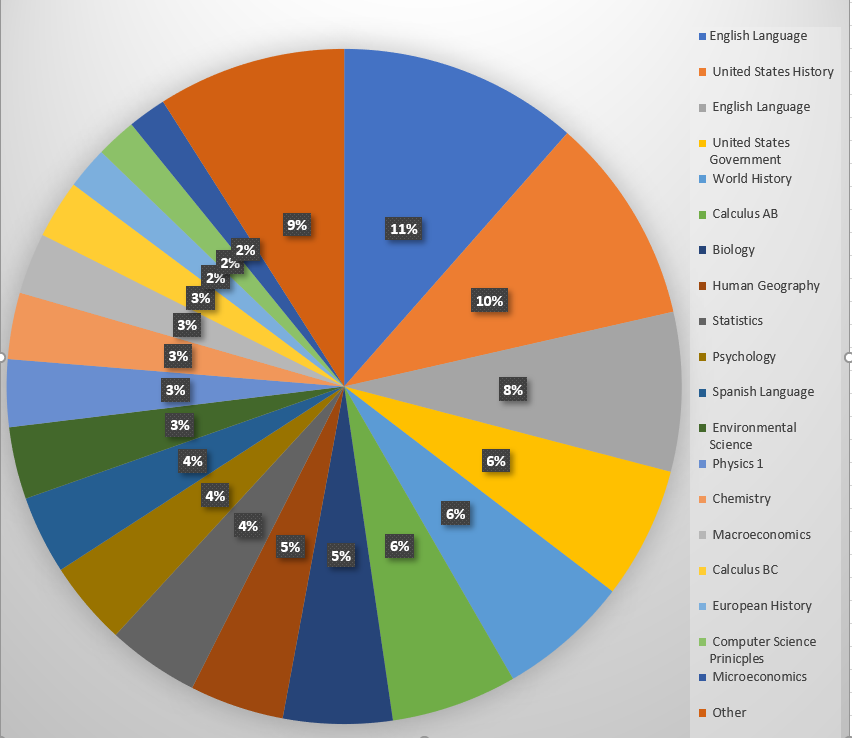|
Villa Walsh Academy
Villa Walsh Academy is a private Catholic college preparatory school for girls in seventh through twelfth grades located in Morristown, New Jersey, United States, conducted by the Religious Teachers Filippini. The school is located within the Roman Catholic Diocese of Paterson, operating on an independent basis. Its brother school is Delbarton School, with which it shares a transportation system. Villa Walsh Academy is overseen by the New Jersey Department of Education and has accredited by the Middle States Association of Colleges and Schools Commission on Elementary and Secondary Schools since 1987; the school's accreditation expires in May 2023.Villa Walsh Academy [...More Info...] [...Related Items...] OR: [Wikipedia] [Google] [Baidu] |
Morristown, New Jersey
Morristown () is a town and the county seat of Morris County, in the U.S. state of New Jersey.New Jersey County Map New Jersey Department of State. Accessed July 10, 2017. Morristown has been called "the military capital of the " because of its strategic role in the war for independence from Great Britain. Today this history is visible in a variety of locations throughout the town that collectively make up |
Delbarton School
Delbarton School is a private all-male Catholic Church, Catholic college-preparatory school in Morristown, New Jersey for young men in seventh grade, seventh through twelfth grades. It is an independent school directed by the Benedictine monks of St. Mary's Abbey and is located geographically within the Roman Catholic Diocese of Paterson, Diocese of Paterson. As of the 2019–20 school year, the school had an enrollment of 609 students and 84.3 classroom teachers (on an full-time equivalent, FTE basis), for a student–teacher ratio of 7.2:1. The school's student body was 80.3% (489) White, 8.9% (54) Asian, 5.1% (31) Hispanic, 3.6% (22) Black, 2.0% (12) two or more races and 0.2% (1) Native Hawaiian/ Pacific Islander.School data for Delbarton School National Center for Education ... [...More Info...] [...Related Items...] OR: [Wikipedia] [Google] [Baidu] |
AP Italian Language And Culture
Advanced Placement (AP) Italian Language and Culture (also known as AP Italian Language or AP Italian) is a course offered by the American College Board as part of the Advanced Placement Program. It is intended to give students a thorough background in the Italian language and Italian culture equivalent to a college-level course. Due to low numbers of students taking AP Italian, it was temporarily discontinued after the 2008-2009 year. On July 3, 2008, The Italian Language Foundation The Italian Language Foundation (ILF) was established on July 3, 2008, to promote and support Italian language education in the United States and specifically to reinstate the Advanced Placement program (AP) of the College Board for AP Italian Lang ... was established to support Italian language education and the AP Italian program. On November 10, 2010, the College Board announced that the program would be reinstated in the fall of 2011, with the first AP Italian Exam scheduled for May 2012. Course ... [...More Info...] [...Related Items...] OR: [Wikipedia] [Google] [Baidu] |
AP French Language
Advanced Placement (AP) French Language and Culture (also known as AP French Lang, AP French Language or AP French) is a course offered by the College Board to high school students in the United States as an opportunity to earn placement credit for a college-level French course. The AP French Language test is widely compared to a final examination for a French 301 college course. Enrollment requirements for AP French Language differ from school to school, but students wishing to enter it should have a good command of French grammar and vocabulary as well as prior experience in listening, reading, speaking, and writing French and a holistic cultural knowledge of francophone regions. The AP French Language and Culture exam underwent a change beginning in May 2012 designed to better test interpretive, interpersonal, and presentational communication skills. Exam The AP French Language and Culture class culminates in an exam to test students' proficiency. The exam is approximately ... [...More Info...] [...Related Items...] OR: [Wikipedia] [Google] [Baidu] |
AP Physics
In the United States, Advanced Placement (AP) Physics collectively refers to the College Board Advanced Placement Program courses and exams covering various areas of physics. These are intended to be equivalent to university courses that use best practices of physics teaching pedagogy. Each AP Physics course has an optional exam for which high-performing students may receive some credit towards their college coursework, depending on which college or university they attend. AP Physics A (conceptual)(never materialized) Designed concurrently with AP Physics B and AP Physics C, AP Physics A was supposed to be a conceptual-only version of AP Physics B (see below). This course would have employed little to no mathematics. AP Physics A never proceeded past the development stage, as colleges would not offer credit for physics without mathematics. AP Physics B (algebra based)(discontinued) In 1969, the single AP Physics Exam was replaced by two separate exams, AP Physics B and AP Physi ... [...More Info...] [...Related Items...] OR: [Wikipedia] [Google] [Baidu] |
AP Chemistry
Advanced Placement (AP) Chemistry (also known as AP Chem) is a course and examination offered by the College Board as a part of the Advanced Placement Program to give American and Canadian high school students the opportunity to demonstrate their abilities and earn college-level credit. AP Chemistry has the lowest test participation rate, with around half of AP Chemistry students taking the exam. Course AP Chemistry is a course geared toward students with interests in chemical biologies, as well as any of the biological sciences. The course aims to prepare students to take the AP Chemistry exam toward the end of the academic year. AP Chemistry covers most introductory general chemistry topics (excluding organic chemistry), including: * Reactions ** Chemical equilibrium ** Chemical kinetics ** Stoichiometry ** Thermodynamics ** Electrochemistry ** Reaction types * States of matter ** Gases, Ideal gases and Kinetic theory ** Liquids ** Solids ** Solutions * Structure of matter ** ... [...More Info...] [...Related Items...] OR: [Wikipedia] [Google] [Baidu] |
AP Biology
Advanced Placement (AP) Biology (also known as AP Bio) is an Advanced Placement biology course and exam offered by the College Board in the United States. For the 2012–2013 school year, the College Board unveiled a new curriculum with a greater focus on "scientific practices". This course is designed for students who wish to pursue an interest in the life sciences. The College Board recommends successful completion of high school biology and high school chemistry before commencing AP Biology, although the actual prerequisites vary from school to school and from state to state. Topic outline Topics covered by this course include: *Biochemistry *Botany * Cell biology * Developmental biology *Ecology *Evolution *Genetics * Microbiology *Molecular biology *Population biology *Zoology In addition to the standard biology topics above, students are required to be familiar with a set of 12 specific biology labs, as well as general lab procedure. Exam Students are allowed to use a f ... [...More Info...] [...Related Items...] OR: [Wikipedia] [Google] [Baidu] |
AP Calculus
Advanced Placement (AP) Calculus (also known as AP Calc, Calc AB / Calc BC or simply AB / BC) is a set of two distinct Advanced Placement calculus courses and exams offered by the American nonprofit organization College Board. AP Calculus AB covers basic introductions to limits, derivatives, and integrals. AP Calculus BC covers all AP Calculus AB topics plus additional topics (including more advanced integration techniques such as integration by parts, Taylor series, parametric equations, vector calculus, polar coordinate functions, and curve interpolations). AP Calculus AB AP Calculus AB is an Advanced Placement calculus course. It is traditionally taken after precalculus and is the first calculus course offered at most schools except for possibly a regular calculus class. The Pre-Advanced Placement pathway for math helps prepare students for further Advanced Placement classes and exams. Purpose According to the College Board: Topic outline The material includes the study and ... [...More Info...] [...Related Items...] OR: [Wikipedia] [Google] [Baidu] |
AP English Language And Composition
Advanced Placement (AP) English Language and Composition (also known as AP English Language, APENG, or AP Lang) is a course and examination offered by the College Board as part of the Advanced Placement Program. When AP exams were first implemented, English Language and English Literature were initially combined. They separated in 1980. Course AP English Language and Composition is a course in the study of rhetoric taken in high school. Many schools offer this course primarily to juniors and the AP English Literature and Composition course to seniors. Other schools reverse the order, and some offer both courses to both juniors and seniors. The College Board advises that students choosing AP English Language and Composition be interested in studying and writing various kinds of analytic or persuasive essays on non-fiction topics, while students choosing AP English Literature and Composition be interested in studying literature of various periods and genres (fiction, poetry, dram ... [...More Info...] [...Related Items...] OR: [Wikipedia] [Google] [Baidu] |
Advanced Placement
Advanced Placement (AP) is a program in the United States and Canada created by the College Board which offers college-level curricula and examinations to high school students. American colleges and universities may grant placement and course credit to students who obtain high scores on the examinations. The AP curriculum for each of the various subjects is created for the College Board by a panel of experts and college-level educators in that field of study. For a high school course to have the designation, the course must be audited by the College Board to ascertain that it satisfies the AP curriculum as specified in the Board's Course and Examination Description (CED). If the course is approved, the school may use the AP designation and the course will be publicly listed on the AP Course Ledger. History After the end of World War II, the Ford Foundation created a fund that supported committees studying education. The program, which was then referred to as the "Kenyon Plan", ... [...More Info...] [...Related Items...] OR: [Wikipedia] [Google] [Baidu] |
National Center For Education Statistics
The National Center for Education Statistics (NCES) is the part of the United States Department of Education's Institute of Education Sciences (IES) that collects, analyzes, and publishes statistics on education and public school district finance information in the United States. It also conducts international comparisons of education statistics and provides leadership in developing and promoting the use of standardized terminology and definitions for the collection of those statistics. NCES is a principal agency of the U.S. Federal Statistical System. History The functions of NCES have existed in some form since 1867, when Congress passed legislation providing "That there shall be established at the City of Washington, a department of education, for the purpose of collecting such statistics and facts as shall show the condition and progress of education in the several States and Territories, and of diffusing such information respecting the organization and management of schoo ... [...More Info...] [...Related Items...] OR: [Wikipedia] [Google] [Baidu] |
Student–teacher Ratio
Student–teacher ratio or student–faculty ratio is the number of students who attend a school or university divided by the number of teachers in the institution. For example, a student–teacher ratio of 10:1 indicates that there are 10 students for every one teacher. The term can also be reversed to create a teacher–student ratio. The ratio is often used as a proxy for class size, although various factors can lead to class size varying independently of student–teacher ratio (and vice versa). In most cases, the student–teacher ratio will be significantly lower than the average class size. Student–teacher ratios vary widely among developed countries. In primary education, the average student–teacher ratio among members of the Organisation for Economic Co-operation and Development (OECD) is just below 16, but ranges from 40 in Brazil to 28 in Mexico to 11 in Hungary and Luxembourg. Relationship to class size Factors that can affect the relationship between student–t ... [...More Info...] [...Related Items...] OR: [Wikipedia] [Google] [Baidu] |



